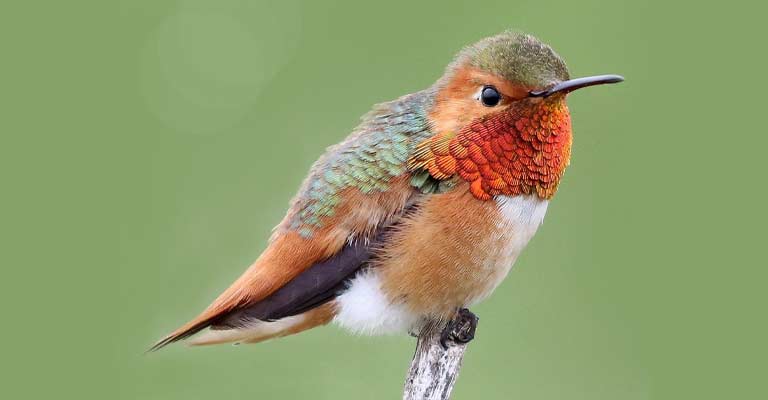Allen’s Hummingbird (Selasphorus sasin) stands as a jewel among North American hummingbirds, captivating enthusiasts with its vibrant colors and agile aerial displays.
This diminutive species, measuring 3 to 3.5 inches in length, graces the western coast of North America from southern Alaska to Baja California.
The male’s iridescent gorget, displaying hues of ruby red or orange-red, is a hallmark of the breeding season.
Females, adorned with a green crown and back, contribute to the visual symphony of coastal habitats, gardens, and woodlands where they flourish.
Known for their territorial nature and rapid, acrobatic flights, Allen’s Hummingbirds play a vital role in pollination. The species’ nesting intricacies and migratory behaviors further underscore its adaptability.
Studying Allen’s Hummingbird unveils a world of biodiversity, highlighting the delicate balance these tiny creatures maintain in their ecosystems along the Pacific coastline. Stay focused.
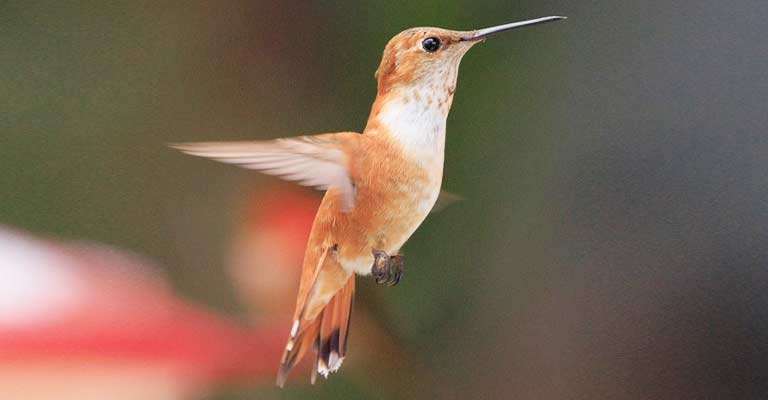
Identifying Characteristics of Allen’s Hummingbird
Allen’s Hummingbird (Selasphorus sasin) is a dazzling and petite bird native to the western coast of North America.
Identifying this species requires attention to specific characteristics, as they share some similarities with other hummingbirds. Here are some key points to help distinguish Allen’s Hummingbird:
Size and Shape
Allen’s Hummingbirds are relatively small, measuring about 3 to 3.5 inches in length.
Their body shape is compact and streamlined, with short wings and a short, straight bill. This distinguishes them from larger hummingbird species.
Plumage Coloration
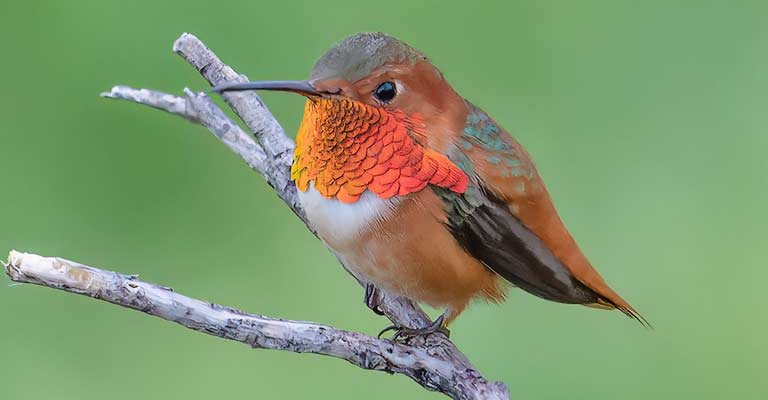
Males and females exhibit distinct plumage characteristics. Male Allen’s Hummingbirds feature vibrant iridescent colors, particularly on their throats.
The gorget, or throat patch, is a brilliant ruby red or orange-red, and it extends up the sides of the neck. Females, on the other hand, have a green back and crown, with a white or lightly speckled throat.
Gorget Shape
One key feature for identification is the shape of the gorget.
Allen’s Hummingbirds have a slightly notched or forked gorget, which sets them apart from the similar Rufous Hummingbird that has a straight-edged gorget.
Tail Feathers
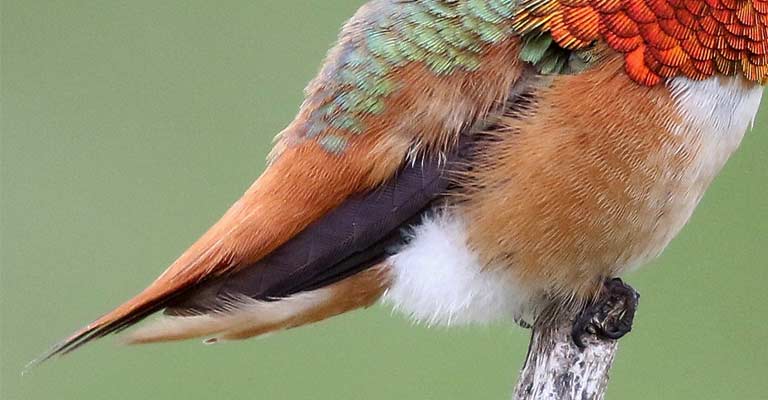
The tail of Allen’s Hummingbirds is relatively short, with slightly rounded tips.
The males often have iridescent, greenish tails, while females may have white-tipped outer tail feathers. This feature helps distinguish them from other hummingbird species.
Geographic Range
Understanding the bird’s range is crucial. Allen’s Hummingbirds are primarily found along the western coast of North America, from southern Alaska to Baja California.
During the breeding season, they can be observed in coastal habitats, gardens, and wooded areas.
Behavioral Traits
Observing their behavior can aid in identification. Allen’s Hummingbirds are known for their agility and aerial displays, including impressive dives and swoops.
Their territorial nature, especially during the breeding season, makes them more noticeable around feeders and flowering plants.
Vocalizations
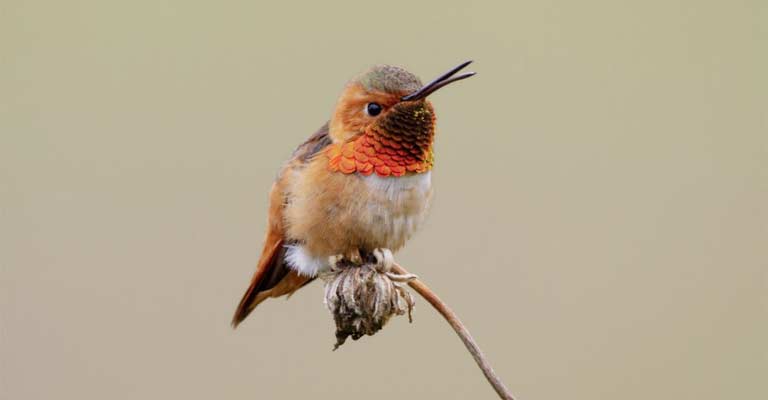
While visual cues are essential, the distinct vocalizations of Allen’s Hummingbirds can also assist in identification.
They produce sharp, metallic chip notes and trills. Familiarizing yourself with these sounds can be valuable when trying to confirm the presence of this species.
Seasonal Migration
Allen’s Hummingbirds exhibit migratory behavior. During the non-breeding season, they may migrate to southern regions.
Understanding their seasonal movements can help differentiate them from other hummingbirds that may be present in the same area at different times.
Identifying Allen’s Hummingbird involves a combination of visual and behavioral cues.
Careful observation of size, behavior, vocalizations, and seasonal movements will enhance your ability to distinguish this captivating hummingbird species from others in its range.
Taxonomy of Allen’s Hummingbird
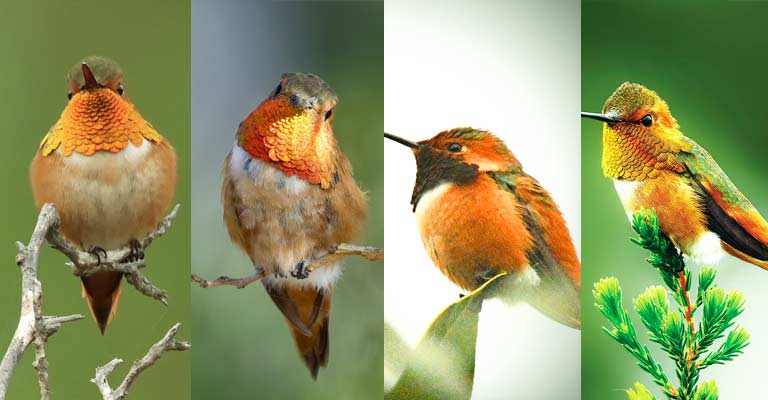
Here’s a table summarizing the taxonomy details of Allen’s Hummingbird:
| Taxonomic Level | Classification |
| Domain | Eukaryota |
| Kingdom | Animalia |
| Phylum | Chordata |
| Class | Aves |
| Clade | Strisores |
| Order | Apodiformes |
| Family | Trochilidae |
| Genus | Selasphorus |
| Species | S. sasin |
This table outlines the hierarchical classification of Allen’s Hummingbird, ranging from the broader taxonomic levels such as Domain and Kingdom to the more specific classifications at the Genus and Species levels.
Allen’s Hummingbird, scientifically known as Selasphorus sasin, is a member of the animal kingdom, chordate phylum, avian class, and belongs to the Trochilidae family within the order Apodiformes.
The genus Selasphorus further specifies its taxonomic identity, highlighting the systematic organization of this captivating hummingbird species.
Allen’s Hummingbird (Selasphorus sasin) exhibits fascinating diversity through its recognized subspecies, each adapted to specific geographic regions. Two distinct subspecies contribute to the rich tapestry of this species:
Selasphorus sasin sasin (Lesson, R, 1829)
Breeding Range: South Oregon and California, USA.
Wintering Range: Extends to south-central Mexico during the winter.
Characteristics: This subspecies contributes to the vibrant hummingbird population along the western coast of the United States. Its breeding grounds in Oregon and California showcase the adaptability of Allen’s Hummingbird to diverse ecosystems.
Selasphorus sasin sedentarius (Grinnell, 1929)
Habitat: Islands off the southern coast of California, USA.
Noteworthy: The sedentarius subspecies is uniquely adapted to the island habitats, showcasing the versatility of Allen’s Hummingbird in colonizing and thriving in different environments.
These subspecies highlight the species’ ability to inhabit a range of ecosystems, from the mainland to offshore islands.
The distinct breeding and wintering ranges of each subspecies contribute to the overall ecological resilience of Allen’s Hummingbird.
Allen’s Hummingbird Life History
Allen’s Hummingbird (Selasphorus sasin) is a fascinating and vibrant species, native to the western coast of North America.
Its life history is marked by intricate behaviors and adaptations that enable its survival in diverse habitats.
From its feeding habits to nesting behaviors and conservation challenges, the life history of Allen’s Hummingbird reflects the delicate balance these tiny creatures maintain in their ecosystems.
Food
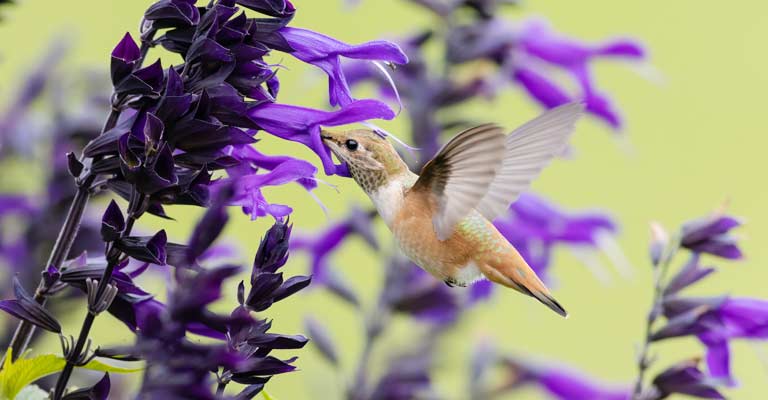
The diet of Allen’s Hummingbirds primarily consists of nectar from a variety of flowering plants. Their long, specialized bills and extendable, tube-like tongues allow them to extract nectar efficiently.
In addition to nectar, these hummingbirds also consume small insects and spiders, providing essential proteins and nutrients.
Their rapid metabolism demands a high energy intake, and they visit numerous flowers each day to meet their nutritional needs.
Habitat
Allen’s Hummingbirds are adaptable and can be found in a range of habitats along the western coast of North America. They thrive in coastal areas, gardens, woodlands, and chaparral regions.
These hummingbirds are often spotted near flowering plants, where they can access nectar sources and catch insects. The availability of suitable nesting sites, food sources, and perching spots influences their choice of habitat.
Range Map
The species’ range extends from southern Alaska down to Baja California, encompassing a diverse array of ecosystems.
Coastal regions are particularly favored during the breeding season, while some individuals may migrate to more southern locations during the winter.
A detailed range map helps researchers and enthusiasts understand the distribution of Allen’s Hummingbirds and their seasonal movements.
Nesting
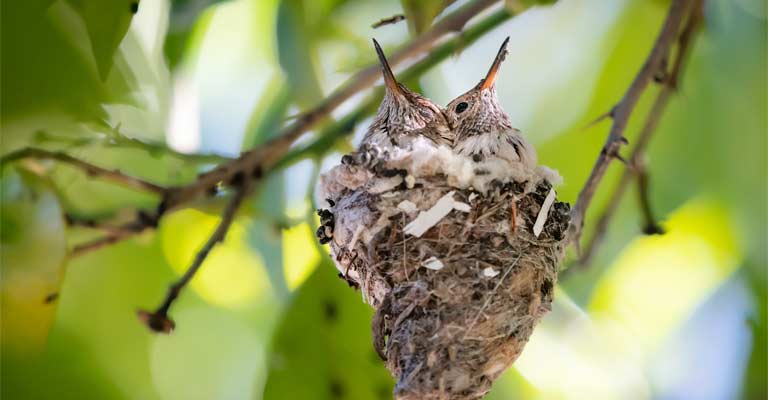
The nesting behavior of Allen’s Hummingbirds is a remarkable aspect of their life history. Females construct small cup-shaped nests using materials such as spider silk, plant down, and lichens.
These nests are often placed in shrubs or trees, providing a secure environment for incubating eggs and raising offspring.
The intricacy and camouflage of the nests reflect the species’ adaptation to its surroundings.
Here’s a table summarizing nesting details for Allen’s Hummingbird:
| Nesting Details | Facts |
| Clutch Size | Typically 2 eggs, ranging from 1 to 3 |
| Number of Broods | Usually 1, but a second brood may occur in a season |
| Egg Length | Approximately 0.5 inches (1.3 cm) |
| Egg Width | Around 0.3 inches (0.8 cm) |
| Incubation Period | Approximately 12-16 days |
| Nestling Period | About 18-22 days |
| Nest Placement | Small cup-shaped nest in shrubs or trees |
| Nest Material | Constructed with spider silk, plant down, and lichens |
| Incubation Responsibilities | Shared by both male and female |
| Parental Care | Both parents feed and care for the nestlings |
| Fledgling Independence | Chicks leave the nest after about 3 weeks |
| Egg Description | White or creamy, sometimes with small spots |
| Nest Camouflage | Blends with the surroundings for added protection |
These details provide a comprehensive overview of the nesting characteristics of Allen’s Hummingbirds, shedding light on their reproductive behaviors and the remarkable adaptations they exhibit during the nesting phase.
Breeding
Breeding season for Allen’s Hummingbirds typically occurs from late winter to early summer. Males engage in elaborate courtship displays, showcasing their vibrant gorgets and performing aerial acrobatics.
After successful courtship, females lay one to three eggs, and both parents share the responsibilities of incubation and feeding.
The development of the chicks is rapid, and fledglings leave the nest after about three weeks.
Diseases and Treatment
Hummingbirds, including Allen’s Hummingbirds, can be susceptible to diseases such as avian pox and various parasites. Maintaining clean and hygienic feeding stations is crucial to prevent the spread of diseases.
When diseases are identified, prompt treatment is essential. This may include consulting with wildlife rehabilitators or avian veterinarians who specialize in hummingbird care.
Conservation
Despite their adaptability, Allen’s Hummingbirds face conservation challenges, including habitat loss due to urbanization and climate change.
Conservation efforts focus on preserving suitable habitats, raising awareness about the importance of native plants, and implementing measures to mitigate the impact of human activities on these fragile ecosystems.
Citizen science initiatives, such as monitoring hummingbird populations, contribute valuable data to conservation strategies.
The life history of Allen’s Hummingbird is a testament to the species’ resilience and remarkable adaptations.
Understanding their dietary needs, nesting behaviors, and the challenges they face is crucial for effective conservation efforts aimed at ensuring the continued existence of these captivating hummingbirds along the western coast of North America.
10 Fun Facts About Allen’s Hummingbird
Allen’s Hummingbirds captivate observers with their vibrant colors, aerial displays, and unique adaptations.
These fun facts offer a glimpse into the fascinating world of these diminutive yet extraordinary birds along the western coast of North America.
- Vibrant Gorget Display: One of the most distinctive features of the male Allen’s Hummingbird is its vibrant gorget or throat patch. During the breeding season, it dazzles observers with bright ruby-red or orange-red colors, extending up the sides of its neck.
- Agile Aerial Acrobats: Allen’s Hummingbirds are known for their remarkable agility in flight. They engage in mesmerizing aerial displays, including impressive dives and swift maneuvers, showcasing their acrobatic skills.
- Compact Size: These petite birds are among the smallest hummingbirds, measuring only 3 to 3.5 inches in length. Their diminutive size adds to their charm and makes them a delightful sight for birdwatchers.
- Notched Gorget Edge: The gorget of Allen’s Hummingbirds has a distinctive notched or forked edge, setting them apart from similar hummingbird species like the Rufous Hummingbird, which has a straight-edged gorget.
- Seasonal Migration: Allen’s Hummingbirds exhibit migratory behavior, with some individuals migrating to southern regions during the non-breeding season. Their movements highlight the importance of understanding the seasonal dynamics of bird populations.
- Musical Chip Notes: These tiny birds communicate with sharp, metallic chip notes and trills. Their vocalizations add a musical element to the natural symphony of their habitats, creating a unique auditory experience.
- Coastal Dwellers: Preferring coastal habitats, Allen’s Hummingbirds are often found near the Pacific Ocean. Coastal gardens, chaparral, and wooded areas provide an ideal environment for their feeding and nesting activities.
- Nesting Artistry: Females construct intricate cup-shaped nests using materials like spider silk, plant down, and lichens. The nests are not only functional but also display a level of artistry that reflects the bird’s adaptability to its surroundings.
- High Metabolism: To sustain their rapid metabolism, Allen’s Hummingbirds consume large quantities of nectar, visiting numerous flowers each day. This high-energy lifestyle emphasizes their vital role in pollination.
- Conservation Concerns: Despite their adaptability, Allen’s Hummingbirds face conservation challenges due to habitat loss and climate change. Conservation efforts aim to address these threats and preserve the delicate balance of ecosystems that these hummingbirds contribute to.
Wrapping Up
The enchanting world of Allen’s Hummingbird unveils a tapestry of vibrant colors, agile aerial displays, and remarkable adaptations.
From their dazzling gorget during the breeding season to the intricacies of nest construction and seasonal migrations, these petite birds embody nature’s marvels.
Conservation efforts become crucial in safeguarding their habitats, ensuring the continued presence of these delightful creatures along the western coast of North America. Thank you so much.
